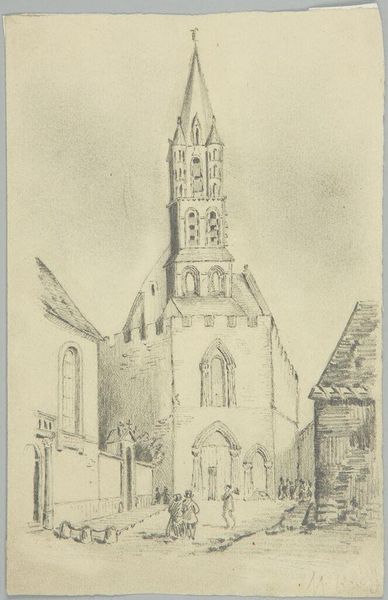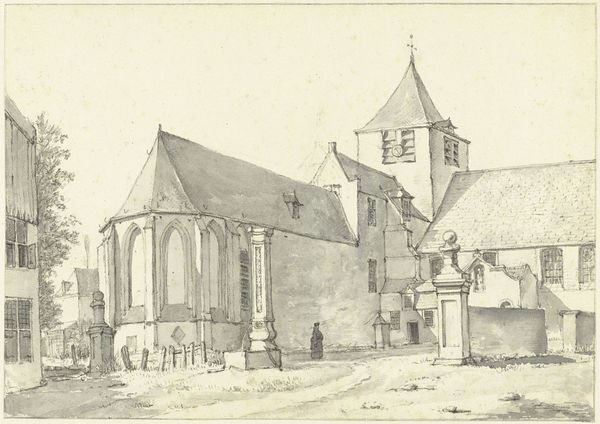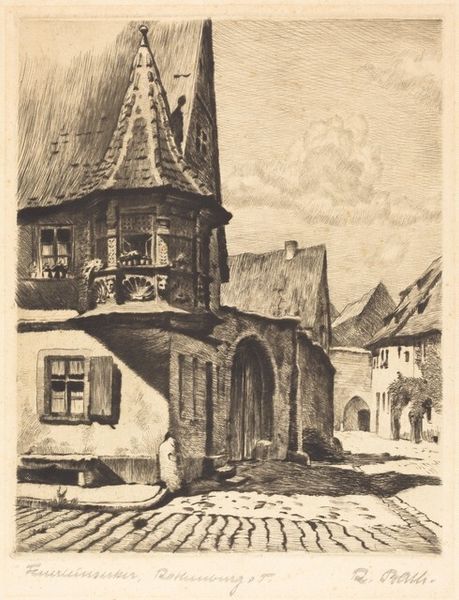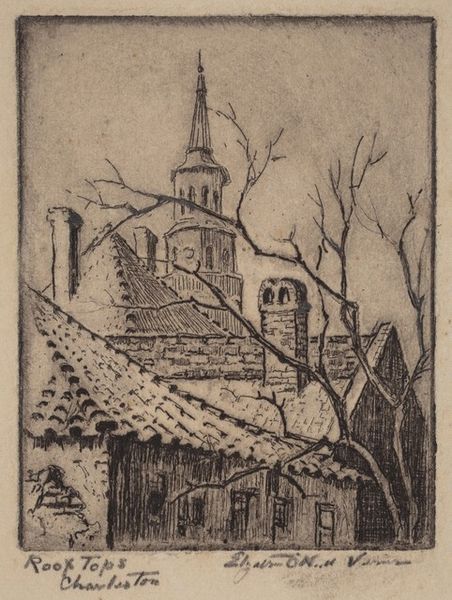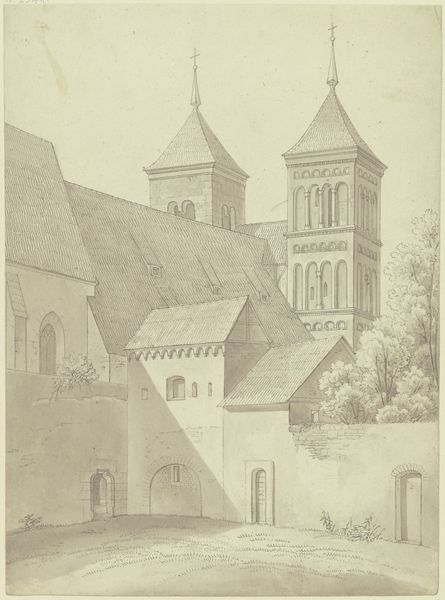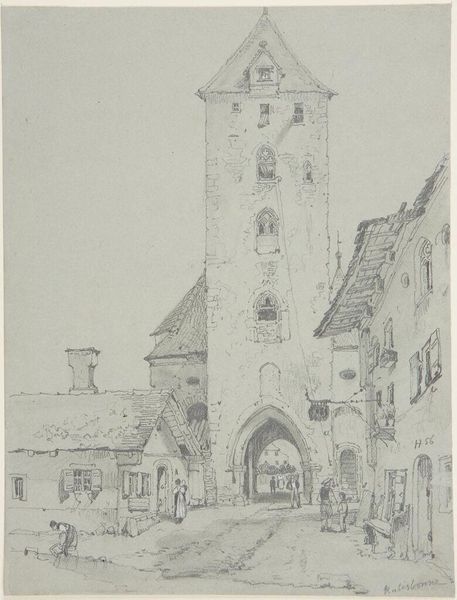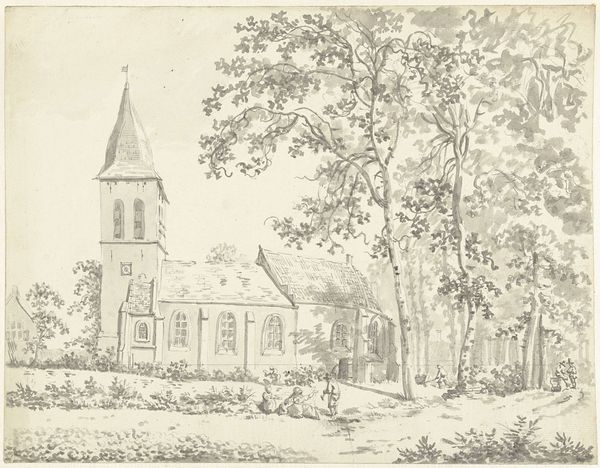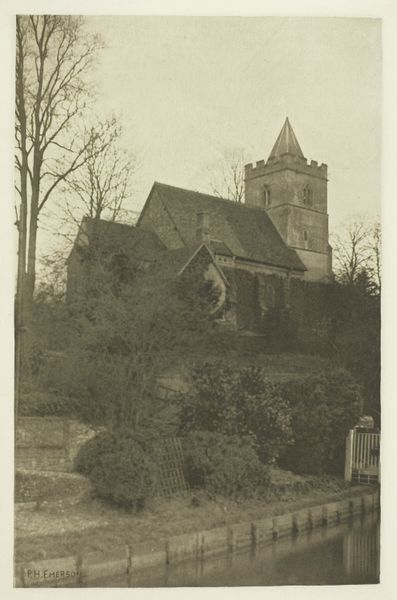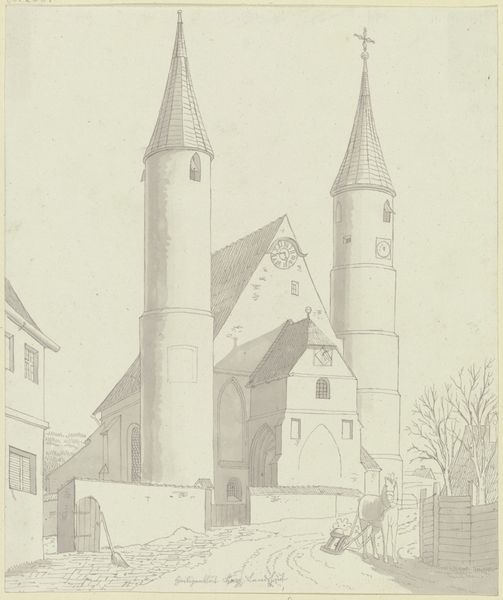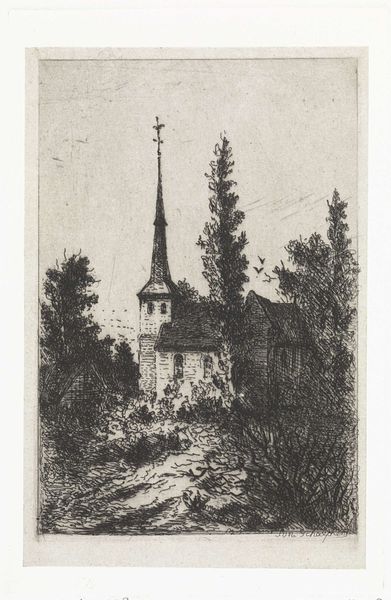
drawing, print, etching, ink
#
drawing
#
pen drawing
# print
#
etching
#
landscape
#
german-expressionism
#
form
#
ink
#
expressionism
#
line
#
cityscape
#
northern-renaissance
Dimensions: plate: 19.1 x 15.2 cm (7 1/2 x 6 in.) sheet: 38.2 x 25.5 cm (15 1/16 x 10 1/16 in.)
Copyright: National Gallery of Art: CC0 1.0
Curator: It has a sort of haunted feel, doesn’t it? The sky, the church… they seem almost to breathe with an unseen energy. Editor: That’s certainly one way to put it. What you are observing is "Paulikirche im Soest", an etching and ink print created by Emil Nolde in 1906. It captures the Paulikirche church in the town of Soest. Nolde, a key figure in German Expressionism, renders the architecture and the surrounding environment in his signature intense style. Curator: Expressionism for sure, it's got that Northern Renaissance darkness. And look at those scratchy lines! Like the ink is clawing at the page. It’s interesting how the form, as a theme, comes through by his bold use of simple, sharp lines. Almost violent, you could say. Editor: Violent? I would say direct. Consider the period. Early 20th century Germany, rife with social tension, rapid industrialization… Nolde is reflecting the anxieties of a world on the brink. The deliberate choice to depict a religious structure with such rawness seems to be an commentary of a shifting Europe. The rough lines also might mirror elements of Northern Renaissance, yet its characterization differs distinctly, reflecting changing themes. Curator: Anxieties…yes, but there's also something rawly beautiful. Notice the crooked tree limbs. They create a lovely counterpoint to the severe verticality of the church. It’s like the natural world, imperfect and organic, pushing against the rigid order of civilization. Or trying to co-exist? Editor: Interesting juxtaposition! It's crucial to acknowledge that during Nolde's time, museums and galleries started embracing such emotionally intense art. They served as public spaces for interpreting modern experience. Nolde certainly tapped into that emerging appetite. Curator: The shadows also are very long. That's also a hint about the anxieties he could be capturing; the ending of a day...the ending of an era. Editor: His work prompts us to rethink public art's role. Instead of mere aesthetics, these pieces stimulate public discussions of our place in a fluctuating cultural climate. Nolde has done a great service in that sense. Curator: For me, standing here, this print is a visceral expression, a whisper from a tumultuous past rendered so potently that it speaks directly to the present. Editor: Absolutely, and analyzing his work, within its time and ours, grants invaluable insights.
Comments
No comments
Be the first to comment and join the conversation on the ultimate creative platform.


